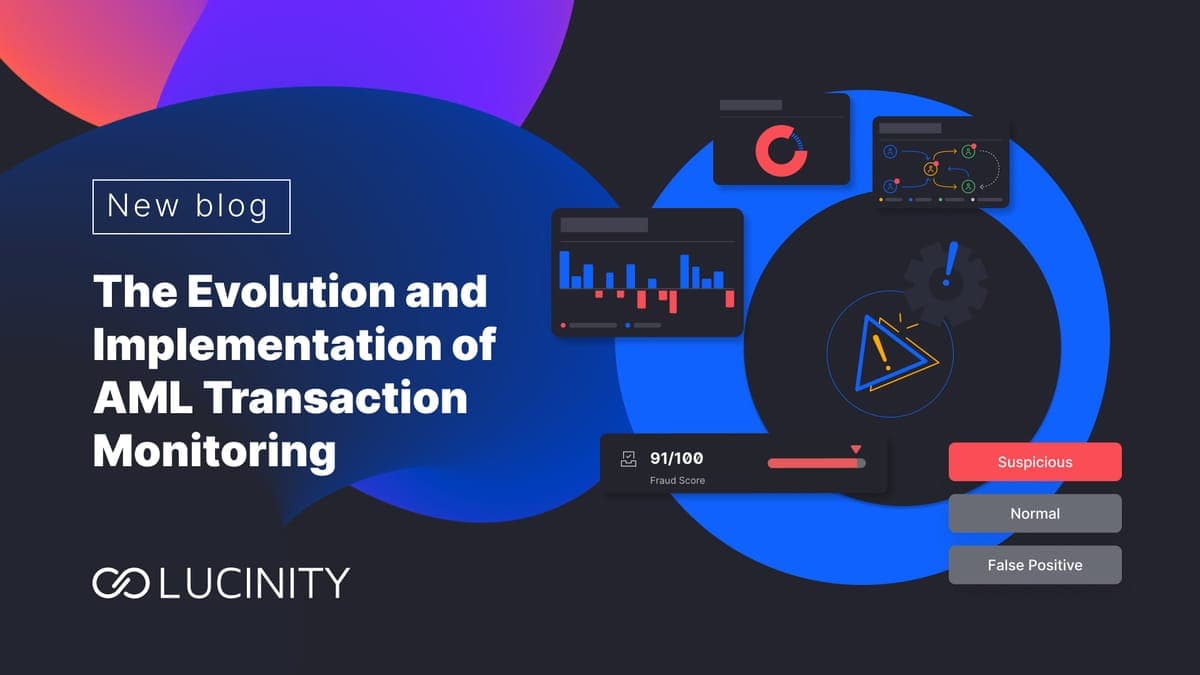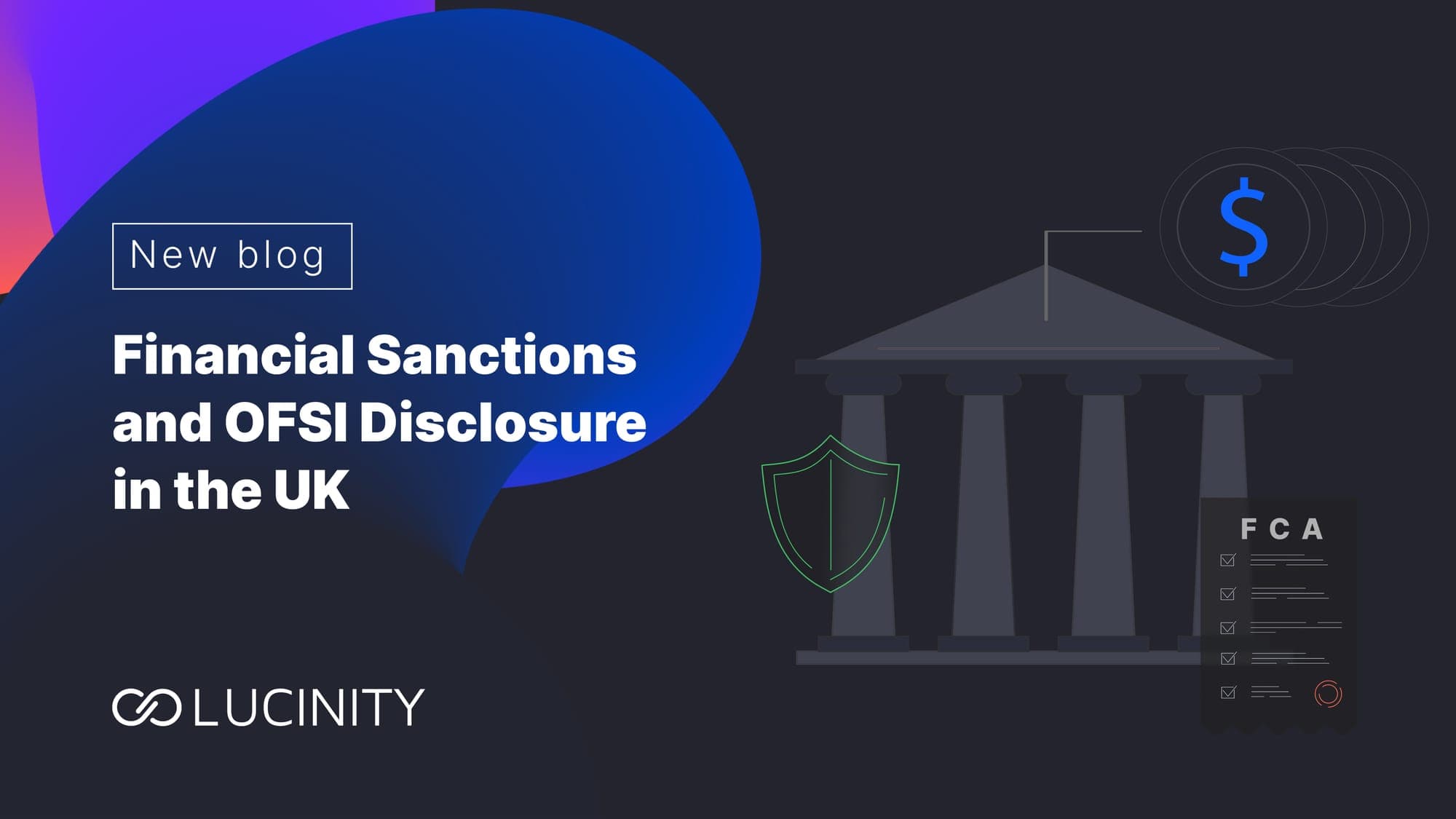Demystifying the AML Investigation Process: A Complete Guide to Anti-money Laundering Workflows for Compliance Teams
Understand the AML investigation process and discover how global anti-money laundering compliance teams can streamline their operations with AI. Learn more about AML compliance workflow with Lucinity.
Compliance teams worldwide are facing mounting pressures to detect and prevent illicit activities. As a result, financial institutions worldwide spend an estimated $274 billion annually on AML compliance programs. These high costs make streamlining the anti-money laundering (AML) investigation process urgent. This blog explores the AML process and discusses how to optimize AML operations with modern technology.
Understanding AML Investigations
An AML (anti-money laundering) investigation is the process of analyzing transactions and customer activity to detect potential money laundering, terrorist financing, or other financial crimes. Financial institutions are required by law to have AML programs that monitor account activity for suspicious transactions that may indicate illegal activity.
When a transaction is flagged as suspicious, an investigation is opened to gather more facts and determine if the activity should be reported to authorities. AML investigations involve reviewing customer profiles, analyzing transaction patterns, researching connections to high-risk entities, and corroborating information through public records and intelligence databases.
The goal is to uncover evidence of money laundering, such as funds from illegal sources like drug trafficking or fraud being disguised as legitimate through complex transactions. A successful AML investigation requires skills in data analysis, research, compliance, and risk management.
Importance of AML Investigations
Anti-money laundering (AML) investigations play an indispensable role in the contemporary financial ecosystem as they are essential to detect, disrupt, and deter growing financial crimes. Effective AML controls and investigations protect institutions from being used as vehicles for money laundering, which enables predicate crimes like drug trafficking, corruption, and terrorism financing. This also prevents reputational, regulatory, and legal risks for them.
On a broader level, AML investigations preserve national security interests and societal well-being. They provide an impactful method to cut off funding for criminals and uncover human trafficking, fraud, and other illicit activities. As such, AML effectively safeguards the integrity of the financial system by maintaining the rule of law and protecting the global economy from exploitation.
The Anti-money Laundering Investigation Process
AML investigations are the first line of defense against financial crime, and they can be divided into steps to form a process. A typical Anti-Money Laundering (AML) investigation process involves the following essential phases in chronological order:
- Alert Generation- The AML investigation process often starts with the generation of alerts, which may stem from transaction monitoring systems, customer due diligence processes, third-party reports, or law enforcement requests.
- Alert Triage- This step involves the preliminary analysis of alerts to determine their validity and the necessity of further investigation. False positives are common, so this step helps allocate resources effectively.
- Case Investigation- If an alert is deemed credible, a deeper investigation is launched. This involves gathering and analyzing detailed information, such as transaction histories, customer profiles, and related parties' information, to understand the nature of transactions and assess them against typical patterns of money laundering.
- Review and Decision Making- After a thorough investigation, the findings are reviewed by an experienced investigator or a team of compliance specialists. Based on the collected evidence, a decision is made whether to dismiss the case or escalate it.
- Reporting- If an investigation concludes that suspicious activity has occurred, the case is reported to the relevant authorities, such as the Financial Intelligence Unit (FIU) in many jurisdictions. This report must often be filed within a specified timeframe and requires detailed evidence and analysis of the suspicious activities.
- Feedback and Learning- Finally, an often overlooked but critical component is the feedback loop. Information from the outcomes of investigations, including feedback from regulatory bodies, should be used to refine and improve the AML processes. This can involve adjusting transaction monitoring systems, updating risk profiles, and enhancing training programs for employees involved in AML efforts.
Each of these steps is mandatory and plays an important role in ensuring that financial institutions and other entities can effectively block money laundering and comply with regulatory requirements. However, the AML Investigation Process comes with significant challenges.
Challenges in the AML Investigation Process
AML investigations present several challenges that compliance teams face on a daily basis. Some common issues faced during the investigations include:
- Unresolved Entities- One of the primary hurdles is the identification and verification of entities. The failure to resolve these entities accurately can lead to significant gaps in understanding the full scope of financial activities, making effective monitoring a challenge.
- Fragmented Views of Customer Activity- Another significant issue stems from incomplete perspectives on customer actions. Without a consolidated view, spotting patterns or irregularities becomes significantly harder, potentially allowing malicious activities to slip through the cracks.
- Outdated Legacy Systems- Many compliance teams rely on systems that are behind the times. These outdated technologies not only slow down the investigation process but also increase the risk of missing crucial information, thus hindering the team's effectiveness.
- Alert Fatigue- Constantly dealing with a high volume of alerts, many of which turn out to be false positives, can overwhelm investigators. This not only drains resources but also makes it more likely for genuine threats to be overlooked.
- Lack of Skilled Investigators- Expertise in AML investigations is not always readily available, which poses a challenge in analyzing complex cases thoroughly. The scarcity of skilled professionals can strain existing teams and reduce the overall quality of investigations.
- Other issues- Geopolitical tensions, cyber fraud, regulatory changes, and the sheer scale of transactions also pose difficulties. Correspondent banking relationships are especially vulnerable given inefficient processes, mounting costs, and indirect account structures.
Compliance teams facing these challenges must seek out solutions that streamline investigations, offer a unified view of customer activities, leverage modern technologies, and efficiently manage alerts to mitigate the risk of overlooking illicit activities.
Impact of Poor Anti Money Laundering Investigations
AML investigation challenges, left unaddressed, can have significant impacts on businesses and economies. Here are some major issues it can lead to-
- Large Regulatory Fines- Poor AML programs lead to heavy fines and penalties from regulators. For example, in 2022 Deutsche Bank was fined $124 million for poor AML controls. These fines drain resources that could be better spent on business operations and growth.
- Reputational Damage and Financial Losses- Ineffective AML programs also lead to reputational damage and loss of customer trust. Banks with repeated AML failures may be perceived as facilitating financial crime. This makes customers wary and can lead to loss of business. According to a survey, the share prices of leading banks fall by 20.7% over the six months following an AML scandal.
- Broader Impact on the Financial System- poor AML controls threaten the stability and integrity of the financial system. They enable the laundering of proceeds from corruption, tax evasion, and organized crime. The UN estimates that money laundering accounts for 2-5% of global GDP annually.
The natural question now is- how to create an effective AML Investigation Process that solves these challenges? Let us discuss this next.
Components of an Effective AML Investigation Process
Essential elements to consider for a successful AML investigation process include having clear policies and procedures, robust data analysis capabilities, skilled investigators, and strong collaboration supported by advanced technology:
- Clear Policies and Procedures- These provide consistency and guidance for AML investigations. They outline the required steps, reporting protocols, and responsible parties
- Advanced Data Analytics Capabilities- Robust data analysis capabilities allow investigators to effectively monitor transactions, identify suspicious activity, and uncover complex money laundering schemes. Advanced analytics and AI tools can help uncover hidden relationships and patterns
- Skilled Investigators- Investigators trained in countering modern financial crimes are key for conducting thorough reviews of suspicious activity. Their expertise helps ensure regulatory compliance and timely case resolution.
- Collaboration- Finally, strong collaboration between compliance, fraud, and cybersecurity teams enables information sharing and a unified approach. A holistic view across departments improves investigation efficiency.
These components are supported by AI, ML, and other latest technology for higher accuracy, efficiency, and speed. Let us understand the role of technology in AML investigations in further detail.
Leveraging Technology to Streamline AML Investigations
Technology is playing an increasingly important role in streamlining AML investigations. AI-powered solutions can help automate repetitive and manual tasks, analyze large volumes of data, identify complex patterns and anomalies, and generate alerts for suspicious activity. This enables compliance teams to focus their efforts on higher-value investigative work.
Some key ways AI is transforming AML investigations include:
- Improved Analytics- Advanced analytics and machine learning models can continuously improve risk scoring and prioritization of alerts, reducing false positives. This allows investigators to focus on the highest-risk cases.
- Finding Hidden Risks- Natural language processing and text analytics can quickly analyze unstructured data like emails, documents, and client notes to uncover risks. This provides additional context for investigations.
- Automating Repetitive Tasks- Automating Repetitive Tasks- Robotic process automation can take over repetitive administrative tasks involved in investigations like data gathering, report generation, etc. Effective AML automation using automated AML solutions frees up investigators' time for focusing on urgent tasks.
- Proactive Investigations- AI-powered transaction monitoring can detect increasingly sophisticated money laundering typologies across channels in real-time. This enables proactive investigations.
With the right governance and oversight, these artificial intelligence capabilities allow compliance teams to enhance the efficiency and effectiveness of AML investigations significantly. Overall, AI solutions enable compliance functions to better keep pace with the volume and complexity of financial crimes.
How Lucinity Can Help: Streamlining AML Investigations with AI
Lucinity offers advanced AI solutions designed to streamline AML investigations for compliance teams worldwide. One key component is the Lucinity Case Manager, which centralizes and structures all data related to investigations in one secure location. It enables easy collaboration across teams and generates intelligent alerts to prioritize high-risk cases. Compliance analysts can save numerous hours previously spent on manual data collection and analysis.
Another innovative solution is Luci Copilot, which acts as a virtual assistant for investigators. Luci can retrieve relevant information on request, suggest connections between data points, and even provide recommendations on the next steps based on its understanding of past cases.
Similarly, Lucinity offers other diverse tools like Customer Intelligence, Regulatory Reporting, and SAR Manager, which work in concert to enhance data analysis, risk assessment, compliance workflow automation, and regulatory reporting.
Together, Lucinity's suite of offerings enables compliance teams to identify and act on suspicious activities with improved accuracy and speed. In this way, integrating Lucinity’s AML system allows compliance teams to reduce investigation time and false positives. To learn more about how Lucinity can enhance your AML investigations and power an effective AML program, visit their website today.
Key Takeaways
The AML investigation process is complicated but essential for financial institutions to maintain compliance and prevent financial crimes. However, the process can be simplified and optimized by following the right process powered by modern tools, as we discussed today. Key takeaways from this guide include:
- AML investigations involve scrutinizing transactions and activity to identify potential money laundering and fraud. Their importance continues to grow as regulations tighten.
- Compliance teams worldwide face challenges like manual workflows, fragmented data, lack of resources, and false positives. These issues impact efficiency and lead to significant compliance costs.
- An effective AML investigation process requires the right strategies, skilled personnel, collaboration between teams, and advanced analytics.
- Solutions like Lucinity's Case Manager and Luci Copilot apply the power of AI to enhance AML investigations. They minimize false positives, uncover complex schemes, and boost productivity.
Are you ready to upgrade your anti money laundering investigations with Lucinity's innovative technology? Visit Lucinity.com now to get started.


